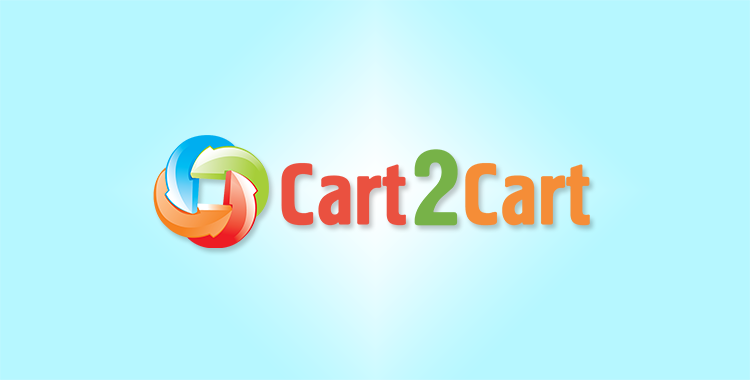There may be a lot of reasons why you would like to migrate your online store from one shopping cart to another, such as exploring platforms like Shopify. You may want to get better functionality, free technical support, mobile commerce facilities, etc. Whatever the reason is, once you decided to transfer your shop one important query arises immediately: how to prevent breaking your site’s SEO? Since your traffic may go down it will affect your sales dramatically. To avoid this issue and make your shop performance smooth and painless, industry experts offer several after-migration SEO tips:
Make Sure Your New Site is Crawlable
Your new site is going to have better aesthetics than your old one. However, the prettier, new version of your website might not be search engine friendly. Because search engines lack our human eyes, they have to read the code that’s underneath the surface to determine what’s on the page. This is called crawling.
If you make the code hard to read, a search engine’s bot cannot crawl your site correctly. This can lead to content and entire pages of your website not being included in a search engines’ indices. For a comprehensive overview, consider our Universal eCommerce Migration Checklist. Avoid using Adobe Flash or JavaScript to display website content as search engines have trouble crawling websites that contain them. Also, your new site must load quickly. Not only does site performance affect conversion rates, but having an inaccessible site means your webpage cannot be crawled.
Set Up 301 Redirects
Use 301 redirects to permanently redirect URLs of your old site to your new URLs. By using 301 redirects, you’re telling the search engines that your pages of your site have permanently moved. This involves doing page by page redirects. The benefit of using a 301 redirect over other forms of redirection is that with a 301 redirect, almost all the link juice will pass to the new URL. For instance, ensuring your PrestaShop SEO URLs remain functional is a key consideration.
Although it’s tempting to use a single redirect for routing all pages on your old site to the new site, it’s better to take the time to do page-to-page redirects. As well as providing your website users with a more consistent user experience, this helps keep your rankings with the search engines. If there aren’t exact matches of pages from your old site to your new site, redirect the old page to a new page with similar content.
Use a Proper Robots.txt File
The robots.txt file is a text file that sits on your website’s root folder. When a search engine robot wants to visit your site, it firsts checks the robots.txt file for any special instructions. These instructions tell the search engine robot which pages on the site that it can and cannot visit which then affects which of your web pages show up in the search index.
Many times, if your new website is still in development and is on a live test server, your developers will have a robots.txt file that disallows the search engine robots from indexing any of the new site. Be careful as you are pushing your site live as it’s been many times that the test server’s robots.txt file pushed live too. This will prevent the search engines from crawling your new site all together and website traffic will be lost.
Although you want to block a test site completely, with most ecommerce platforms you only want to selectively block certain directories. This is because you don’t want your search engines to be indexing directories not meant to be seen by the public such as file exports and image directories.
Inform Google of your Site Move
If your site is moving domains, this is particularly useful. In Google Search Console (you have a Search Console account don’t you?) you can directly inform Google that your site is being moved by using the Change of Address tool. To use this tool, you must first be a verified owner of both the old and new sites.
Create a Sitemap
Theoretically, if you have a perfectly crawlable website, Sitemaps are not needed. However, since it’s not safe to assume your new website is perfectly crawlable, Sitemaps are a way to tell the search engines about pages they might miss.
Most of modern shopping carts have a built in function that allows you automatically generate a Sitemap you just need to find it and activate. For instance, in Adobe Commerce it can be created by visiting your Adobe Commerce Admin and navigating to the appropriate settings, often found under System or Marketing. Make sure that you’ve activated Adobe Commerce’s Cron service as this will ensure your sitemap is updated on a regular basis as you add new CMS, product, and category pages.
My New Site is Up, Now What?
You’ll need to monitor your site transition by using a combination of Analytics and Google Search Console. Your Analytics can quickly show if your visitors have been affected by your site transition. You’ll specifically want to pay attention to organic traffic numbers. This is a metric that you’ll want to keep track of overtime. Because search engines can take some time to crawl both your new and old site, you may see a dip in traffic at first but you can expect for traffic to return back to normal if everything was completed successfully. Monitoring Google Search Console will also expose any 404s errors, Sitemap, Meta description and title tag problems, as well as keeping track of your site’s speed.
Now you have all the necessary information to conduct successful SEO migration. However, web shop transfer itself may become a serious challenge. How to move all your products, customers and orders without any data loss and duplication? Try Cart2Cart! It is an automated shopping cart migration service that will help you to perform swift migration.
Monthly Update – December 2025
As we approach the end of 2025, the landscape of e-commerce SEO is continuously evolving, with artificial intelligence playing a more dominant role. Search engine algorithms are increasingly sophisticated, focusing on predictive search, personalized results, and understanding complex user intent. For online store owners, this means moving beyond simple keyword optimization to creating truly valuable, in-depth content that addresses customer needs and positions products effectively. Voice search optimization is also a growing area, requiring natural language processing and structured data markup to capture conversational queries.
Technical SEO remains paramount, with an increased emphasis on site speed, mobile responsiveness, and overall user experience. Core Web Vitals continue to be a critical ranking factor, and proactive monitoring and optimization are essential. Furthermore, emerging trends like sustainable commerce and video SEO are gaining traction. Optimizing product pages with engaging video content and highlighting eco-friendly aspects can significantly boost visibility and conversion. Staying ahead means integrating these advanced strategies while maintaining a strong technical foundation.
For more details, explore our FAQ section or schedule a call with a migration expert.




